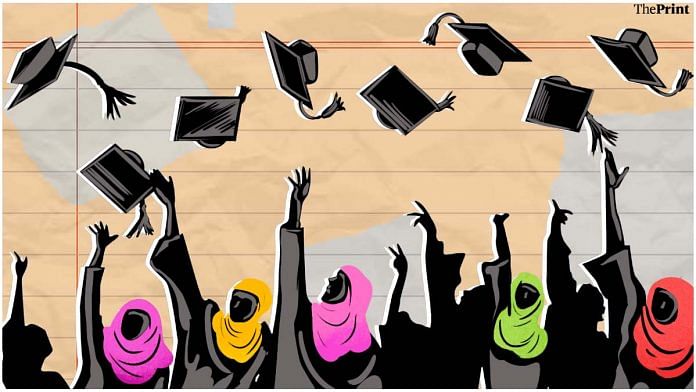Outside Cairo University in Egypt, which has become progressively more Islamist, there stands a century-old statue of a young Muslim woman lifting off her veil — symbolically reaching out for freedom from the mental and other restrictions that patriarchal tradition has imposed on her. It is hard, therefore, to argue that wearing the hijab is prescribed by Islam, or all versions of it. In India, the unfortunate trend has been the opposite of what that statue in Cairo, dubbed Egypt’s Awakening, beckons women to do. More Muslim women in the country are adopting more conservative dress, even in places where there was no earlier tradition of wearing the hijab or burqa.
Liberals, the secular-minded and social progressives — basically humanists — will worry about this trend, as they will about any increase in public displays of religiosity, a trend that is not restricted to people of one faith. But they will have to accept that the hijab is a mark of identity, just as much as the turban is for a Sikh male. When turbans are allowed on school and college campuses, or sacred ash on the forehead, can one ban the hijab? If not, does the argument hold if extended to the burqa?
This is treacherous ground, possibly a slippery slope. But some societies happen to be more theo-centric than others. And India is becoming more, not less, so. Is that good for a diverse, multi-religious country? Probably not. Is there room here for a hard secularism as the solution? Again, probably not. Though uniforms of all kinds (in school or the armed forces) are designed to minimise differentiation, they do provide for some flexibility — beards of different kinds have been an issue. There is no one-size-fits-all answer.
Also read: 7.5 years of Modi: Good ‘output’ numbers like houses & toilets but not ‘outcomes’ like poverty
Your columnist’s purpose is not to stray into territory where others will be better informed. Rather, it is to shift the focus of debate to what should be society’s priority: Women’s education, and their participation in the workplace. The statistics tell us that literacy among Muslim women is lower than for all other religious communities. It’s the same with women in higher education — Muslims have the lowest representation, in relation to their population. The numbers have been improving, but there is much catching up to do. So, it should be something to welcome that Muslim girls and young women are keen to attend school and college, and equip themselves better for life. Making that incumbent on a possibly difficult personal choice with regard to clothing is not an argument that recommends itself.
There is the related issue, of women’s presence in the workplace. Women of all communities in the working age group who are working or willing to work are down from 30 per cent to 20 per cent — compared to 75 per cent for men, down from about 80 per cent. This was before the pandemic; both numbers seem to have fallen further in the last couple of years. The ratio for Muslim women is likely to be even lower than the 20 per cent figure for all women. Whether it is acquiring an education or working for a living, Muslim women need to be encouraged to step out — for all the direct and associated benefits, both personal and societal. Among other things, they may give birth to fewer children, countering one of the accusations usually hurled in their direction.
In the end, there is poverty. In a country with surplus labour, the income of a single wage-earner can be too low to raise a family above the poverty line; and employment has become more uncertain than before. Getting women to work provides insurance, over and above the additional income. This is not to generate male-female conflict over jobs. Many employment-intensive activities attract women of all communities — garment factories and electronic assembly units, to mention two. This is apart from the traditional women-centric occupations, like teaching and nursing. Kerala has shown how these can be avenues of liberation for women. Meanwhile, studies show that tribals, Muslims and Dalits have the highest proportion of poor. Getting women in these communities educated and then employed is an obvious societal good and an economic imperative.
By special arrangement with Business Standard
Also read: India has turned to survival of the fittest under Modi, but needs ‘survival of the friendliest’



